The Cossack Sorcerers of Folk Legends and Historical Chronicles
The image of Cossack Sorcerers was so popular that there are many legends about them. One tells of the Battle of the Cossacks against the Poles. As soon as the Cossack Sorcerer Kravchina (army) hit them, the Poles’ progress was halted. Bullets were flying, but the Cossacks caught them. And when it was necessary to cross a river, the Kravchina went forward and the river ran dry. Yes, legends say they made rivers run dry.
Another story tells of how the Crimean Tatars chased the Cossacks for a few days. When the horses and pursuers were extremely tired and there was not enough food, the Tatar Bei waved his hand and declared, ‘Let them escape, they will disappear in the steppe without food anyway.’ But the Cossacks did not have the mind for such a demise and were not going to disappear so uselessly. Each Cossack neck had an amulet that protected the owner from starvation. Thus, their path was threaded with firm, dark plants, and in time these eased their hunger and quenched their thirst and the Cossacks’ strength slowly began to return. No one died. And on the way to the Sich, two more Tartar troops were crushed by the Cossacks.
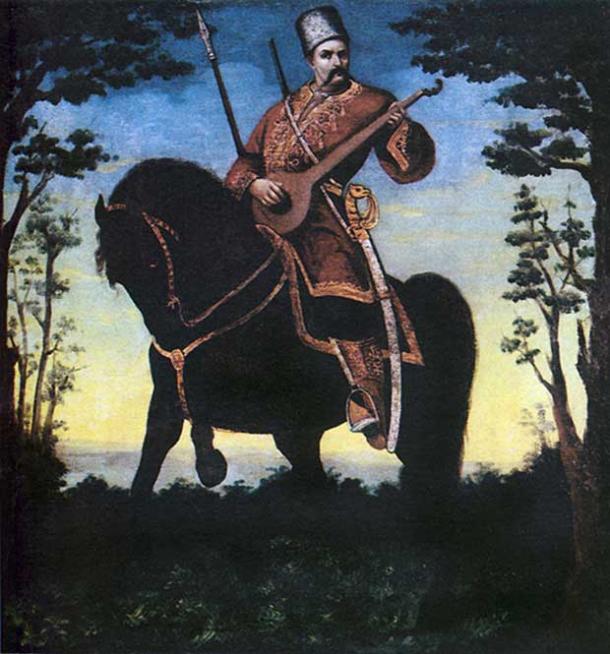
Cossack Mamay - the ideal image of a Cossack in Ukrainian folklore. (Public Domain)
More than Whispers
As to the historical evidence, the first mention of Cossack Sorcerers is found in the work of Polish historian Bartush Paprotsky (1543 - 1614). According to him, Hetman Samil Soborovsky was a Cossack who knew how to magically create bullets. The Swedish ambassador and historian Peter Peterson (1570 - 1622), who was in Moscow in 1608, also mentions one CossackSorcerer, Corel, who was smart and miraculously helped Tsarevich Dmitry.
- Cossack-Sorcerers: The Secretive and Magical Warrior Society of Ukraine
- Dmitri of Uglich and the Three False Dmitris: One of the Most Bizarre Episodes in Russian History
Another Polish historian, Martin Pashkovsky (16th - 17th centuries), discussed the powers of the Cossack-Sorcerers in his poem "Korogva Savromatskaya in Volokh" (1621), which is dedicated to the 1621 battle in Khotyn. In describing this confrontation between Poland and Turkey, he wrote about the Cossacks, saying they have nine souls and practiced sorcery.
Polish priest Shimon Okolsky (1580 - 1653), recalling the defense of the Govtov settlement of the Cossacks from the Polish army, tells about the use of magic by Cossack officers against the Poles in order to control their weapons.
From the anonymous historical work, "History of Rus" in the nineteenth century, it is known that during the uprising of the Cossacks under the leadership of Bohdan Khmelnitsky against the Commonwealth, the Polish Tomasz in the town of Old Bykhov in Belarus shot the Cossack commander Hetman Ivan Zolotarenko with a silver bullet dedicated to the church, as legends said a normal bullet could not kill the Sorcerer.
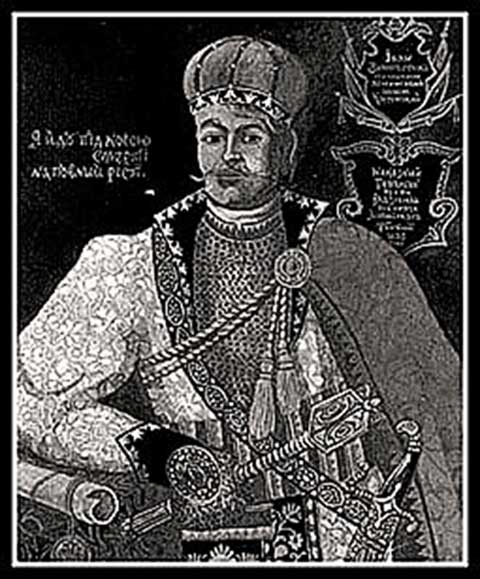
Ivan Zolotarenko (? -1655). (Public Domain)
According to the historian Svetlana Bessonova, the Sorcerers were buried face down so that the sun's rays did not touch their faces and they could not resurrect. Some people were also stabbed in the heart for the same purpose.
Sorcerer Training and Practice
We do not have the exact descriptions of how Cossack-Sorcerers learned the art of sorcery. But many of the practices have been reconstructed from historical and ethnographic records, oral history, and memoirs of the descendants of the Cossacks made by historians, ethnologists, archaeology amateurs, and martial arts experts who study Cossack techniques of hand-to-hand combat.
According to these reconstructions, training began from early childhood and was led by elder sorcerers who did something different each day with their students to guide them to the truth. Future sorcerers were trained in hand-to-hand combat, the ability to fight with sabers and capes, how to shoot arrows, pistols, and guns, horseback riding, gliding, and some esoteric practices.
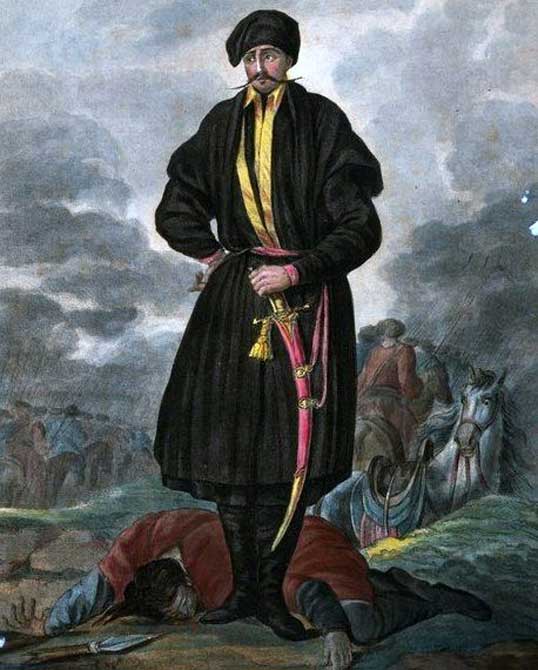
Zaporozhian Cossacks Officer in 1720. (Public Domain)
One such practice is an exercise called "Faster than the shadow." The young man would put his back to the sun so that he clearly saw his shadow on the wall. The task was as follows - to touch the wall with his hand without the shadow being there. This developed rapid reaction skills.
Another practice, known as "Seeing Your Size", was to find the relationship between a person and some elementary device so its use became as effective as possible. The young Cossack was sent to the forest for a stick which he had to use to jump over a high fence. If it was "not of his size" the chosen stick would not allow him to get the expected result. In addition, it was important where he held the stick – too high and the stick broke, too low and the jump did not send him up and over. That exercise could be altered by jumping with the same stick over a ditch. A sword had to be the right length, shape, and weight for a Cossack too. And his horse was chosen with the same requirements.
The Cossack-Sorcerers had another practice aimed to change one’s consciousness and to ‘stop time’. A young Cossack was handed a stick, which he had to hold in front of him with both hands and run down a mountain. At the bottom of the hill, in a place hidden from his eyes, a small stick was planted in the ground, so the Cossack tripped on it and started to fall off a cliff. The moment the Cossack removed his foot from solid ground led to a state where he felt he was one step away from death…it seemed that time had stopped. During this practice, the Cossack experienced an altered state of consciousness.

Naberezhnaya ulitsa, 1, Koktebel', Krym, Ukraine. (Анатолий Таранцов/CC BY 3.0)
Cossack-Sorcerers in training had to practice “The Golden Mean” - to find out about medicinal herbs and be able to make medicines from them. This ability allowed them to study the effects of plants on the human body.
The practice of "Entering the rhythm" involved a Cossack walking in the dark over a pathway with stones thrown randomly across it. He would have to ‘find the rhythm’ that would prevent him stumbling over the stones.
The sorcerer learned to understand animals and how to interact with them as well. This would sometimes involve putting his left hand over the heart of a horse or dog and listening to its breath with his right ear. This work with animals meant that the Cossacks always had faithful friends at hand to guard the camp and a clever and connected horse in battle.

‘Cossack on duty’ by Józef Brandt. (Public Domain)
They were taught to enter the spirit of a bird or other animal too. This could involve a Cossack standing on a hill watching a hawk soaring high above him. His heart would begin to beat at the same rhythm as the hawk flapped its wings and the Cossack slowly entered into a state of oneness with the bird, but with an awareness of what was going on around his body.
Another practice to alter the Cossack-Sorcerer in training’s consciousness would be to sit him in front of a wheel. Two marks were placed in exact opposite locations, or mirrored positions. The Cossack would sit motionless watching the wheel as someone spun it. After a time, the continued effort to track the markings would lead the student into an altered state of consciousness.
- Ten Legendary Swords from the Ancient World
- Mauritius Square, Ukraine: What is this Giant Crab-like Earthworks?
The practice of "full disclosure of forces" meant someone poured cold water over the Cossack and then he was left to sit under the burning sun. In the evening, he was left in the forest under an oak. When he next came to his senses, he was said to have acquired the energy of nature. Soon after he would be attacked on all sides to increase his reaction time - the next skill to be developed.
The ability of “true vision” was acquired at midnight in a marsh where there were six pillars with a fire lit at the center. The Cossack was forced to walk in a circle while being aware of both the light of fire and the darkness of the marsh at night. This training was intended to teach him to see light in the darkness. The practice was complicated because there were stones hung in bags that the Cossack had to avoid in the dark.

The Cossack was forced to walk in a circle while being aware of both the light of fire and the darkness of the marsh at night. (CC0)
A very interesting technique was the transition for a man into a state of “awakened dream”. In this, a training sorcerer was led to a ring of fires at night. A senior sorcerer lit four torches and handed two to the student. The torches increased the light in the circle of fire and the young Cossack was attacked. The elder gradually chose the rhythm of the assault until the young Cossack's consciousness was overshadowed and he entered a semi-subconscious state.
In addition, future sorcerers were taught hypnosis and illusions.
The Skills of Cossack-Sorcerers, Myth or Reality?
In addition to legends, historical riddles, and speculation, nothing is known about the real skills of the sorcerers. We can only assume that they could accomplish their feats of magic in some way. To chant a “spell” or treat someone with herbs have been common practices in Shamanism. If the chant/spell has an impact on someone or not differs and is generally based on the people involved.
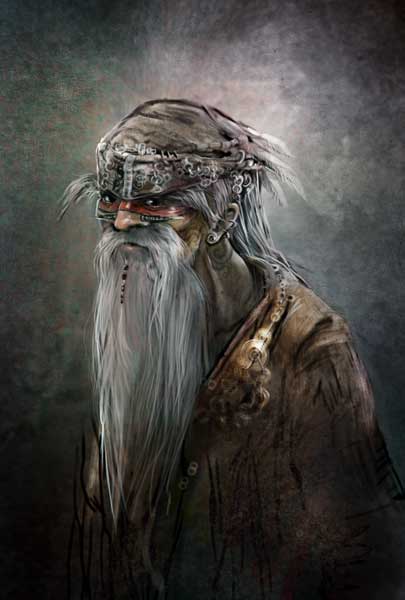
Shaman. (David Revoy / Blender Foundation/CC BY 3.0)
There are, however, a number of experiments conducted around the world which show that these practices could create a change. For example, Japanese scientist Emot Masaru (1943 - 2014) showed that certain words can affect water, when after pronouncing some words crystals of water form an ideal geometric shape and after others something that was far from beautiful came out. In many cultures, shamans have been said to have the ability to alter the weather – the true effectiveness of their efforts is unknown.
The ability to evade a bullet may sound weird, but it is quite possible. The modern Japanese samurai Isao Machia got into the Guinness Book of Records for cutting a bullet fired at him from a pistol. However, the idea that a sorcerer could catch bullets with his bare hands seems impossible. To do this, you need to either have strong telekinesis like Neo from the Matrix movie or be able to slow down time and the bullet’s flight.

Recreation of the Matrix Bullet Time scene. (Iñigo Mujika/CC BY NC SA 2.0)
The same is true about the ability to handle fire or other burning objects. This happens today when a person can walk across hot coals without flinching. The ability may best be explained with hypnosis, as in when someone could be told that a cold object is hot and really believes it is – he or she may even receive a burn through the belief.
The suggestion that Cossacks could glide on carpets or rugs on rivers can be explained as a trick or illusion. With some hidden additions under the rug they could make it look as if it was gliding or even flying. Japanese Ninjas had a similar idea and through the use of cunning hidden devices, seemingly walked on water. In the modern world, magician Chris Angel used an illusion to walk on the Thames River.

Vasyl Kornienko (1867 - 1904) The sorcerer floats on a carpet on the water. (Public Domain)
If you consider it long enough, you can even figure out how sorcerers apparently opened locked castles with just their bare hands. American Illusionist Harry Houdini (1874 - 1926) easily broke free from shackles with his cunning, planning, and a bit of trickery.
With regard to the legends of Cossacks floating in boats painted on the wall or floor, this can only be done by hypnosis, when a person was induced to believe something which could not be real.
The ability to enter into a changed state of consciousness is also a long-standing real practice associated with hallucinogens, narcotic substances, and psychophysical practices such as meditation. The Cossacks used all these practices.

Meditation can sometimes provide an altered state of consciousness. (CC0)
Such phenomena as the ability to enter the body of, or transform into, an animal such as a bird is still considered fantastic because sound explanations have yet to be found. Teleportation and the ability to resurrect the dead cannot be explained either because there is still no real confirmation of this, except in myths, legends, and biblical stories.
Sorcerers could have found treasures by dowsing, like when tree branches have been used to find water, treasures, or minerals. Some have also claimed the sorcerers were the ones who hid the treasures, though this has not been confirmed by historical facts.

Dowsing. (Public Domain)
Chieftain Ivan Sirko and the Fate of a Sorcerer
Among the leaders of the Zaporizhian Cossacks there were many sorcerers, but the most famous of them was Ataman Ivan Sirko (1605/1610 - 1680). His life is full of legends. They claim that he was born with his teeth and he killed the devil. They also say that he could predict who he would fight and during battle he might take control of a horse, a wolf, or a hawk, or curse the enemy army, and that when his hand received the blow of a sword he only was left with a blue mark. It is not surprising that the Turks and Tatars called him Urus Shaitan (Russian devil).
The Turkish sultan issued a decree on prayer in mosques for the death of the sorcerer. And after his death, the Cossacks kept Sirko's right hand in hiding for five years as a charm to help win battles. As a talented commander and strategist, he took part in 55 military campaigns and never lost a battle.
- 12th century sword found in Russia may have belonged to Ivan the Terrible
- The Dramatic History of the Kamianets-Podilskyi Castle in Ukraine: From Castle to Prison

Ilya Repin (1844–1930). Ivan Sirko, 1880 - 1891. (Public Domain)
In 1775, the troops of Russian Empress Catherine II approached Zaporizhzhya Sich. The Cossack-Sorcerer and his companions fled to the Danube and built a fortress. Being on the Danube, the Cossack-Sorcerers used their skills to make advances in the war with the Russians and capture a city.
After the destruction of the Transdanubian Sich by the Turks in 1828, many Cossack-Sorcerers moved to the territory of Western Ukraine, then part of the Austrian Empire. Seeking peaceful lives, they gradually turned from warriors to ordinary peasants. They also gained some glory as village healers and seers.

Cossack Mamay, 1st half of the 19th century. (Public Domain)
Those who fought for the territory of the Russian Empire became part of the Kuban and Azov Cossack troops as scouts or Plastans. The term Plastun in the old days meant a person who crawled i.e. worked in intelligence.
Plast Cossacks became famous in many wars with the Russian Empire, in particular in the Caucasian War of 1817 - 1864, when Russia tried to capture territory in the Caucasus, during the Crimean War of 1853-1856 against Russia, Turkey, Great Britain, France, and the Kingdom of Sardis, during the Boxing Rebellion in China from 1898 to 1901, when the Chinese were dissatisfied with the tyranny of European powers and created an uprising led by masters of martial arts, the Russian-Japanese war of 1904-1905, and the First World War of 1914-1918.

Kuban Cossacks, late 19th century. (Public Domain)
Top image: "Zaporozhian Cossacks write to the Sultan of Turkey" by Ilya Repin (1844–1930). Source: Public Domain
By Ingvar Nord
References:
Alexander Gurzhy and Taras Chukhlib, History of the Cossacks. - Kyiv, 2013. - P. 411. (In Ukrainian)
Anastasia Nazarenko, Kozak Ivan Sirko. Man is a Legend. - Available at: https://uamodna.com/articles/kozak-ivan-sirko-lyudyna-legenda/ (In Ukrainian)
Esoteric Depths of Sorcery. - Available at: http://spadok.org.ua/charakternytstvo/ezoterychni-glybyny-charakternytstva (In Ukrainian)
History of Rus. - Available at: http://litopys.org.ua/strus/rusiv.htm (In Ukrainian)
Ivan Sirko: Great Sorcerer of the Cossack Ukraine. - Available at: http://spadok.org.ua/charakternytstvo/ivan-sirko-velykyy-charakternyk-kozatskoyi-ukrayiny (In Ukrainian)
Isao Machi's site. - Available at: http://nihontou.jp/syuushinryuu/intro.htm (in Japanese)
John Cox. Houdini vs. the Siberian Transport Cell Part I - Available at: http://www.wildabouthoudini.com/2016/07/houdini-v-siberian-transport-cell-part_13.html
Carrie Poppy. A Grain of Truth: Recreating Dr. Emoto’s Rice Experiment. - Available at: https://www.csicop.org/specialarticles/show/a_grain_of_truth_recreating_dr._emotos_rice_experiment
Sorcerers. "Such sorcerers that they cannot be killed by any weapons.” - Available at: https://freiah.livejournal.com/238168.html (In Ukrainian)
Sorcery: Practices, Methods and Techniques. - Available at: http://spadok.org.ua/charakternytstvo/charakternytski-praktyky-techniky-i-metodyky (In Ukrainian)
Cossacks are Sorcerers - The custodians of our kind. - Available at: http://spadok.org.ua/charakternytstvo/charakternyky-odvichni-chranyteli-kozatskogo-rodu (In Ukrainian)
Cossack Sorcerers: Ukrainian Ninjas or Samurai? - Available at: http://webcommunity.org.ua/2009/08/09/kozaky-harakternyky-ukrajinski-nindzya-chy-samuraji/ (In Ukrainian)
Sorcerer Cossacks are the guardians of ancient knowledge. - Available at: https://uamodna.com/articles/kozaky-harakternyky-hranyteli-drevnih-znanj/ (In Ukrainian)
Taras Kalyandruk, Lost heritage? Who are the Cossack-Sorcerers. - Available at: http://www.aratta-ukraine.com/text_ua.php?id=943 (In Ukrainian)
They were considered immortal. Truth and myths about the Cossack - Sorcerers. - Available at: - http://spadok.org.ua/charakternytstvo/charakternyky-odvichni-chranyteli-kozatskogo-rodu (In Ukrainian)
Yevhen Lutsiv, Who are the Cossack-Sorcerers? - Available at: http://www.aratta-ukraine.com/text_ua.php?id=924 (In Ukrainian)
Yuriy Grytsyuk Y., Cossack-Sorcerers: Magic Through Reality / All-Ukrainian Student Scientific and Technical Conference "NATURAL AND SCIENTIFIC SCIENCES. TOPICAL ISSUES." - Ternopil, 2017. - P. 200. (In Ukrainian).
















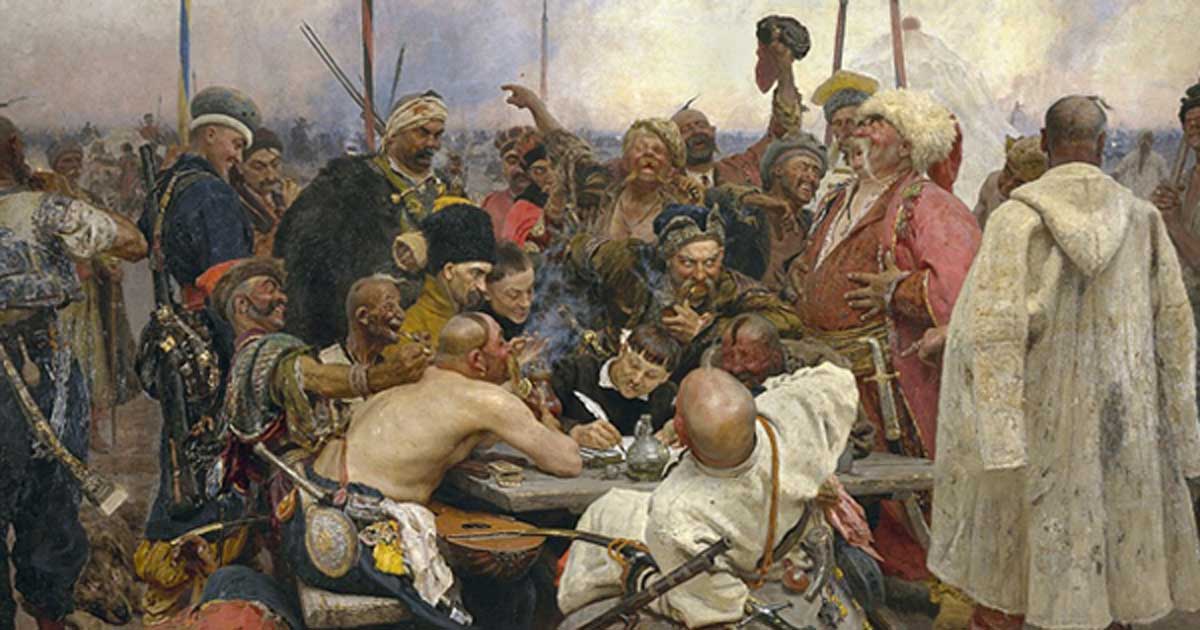

Comments
Ataman Ivan Sirko lived between 1605/1610 and 1680 and he couldn't have been called "Russian Devil" as Russia name only appeared in the 18th Century. Before that the country was called Moscovia. Ivan Sirko was from the land of Rus (present Ukraine).